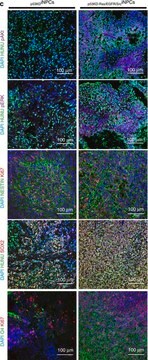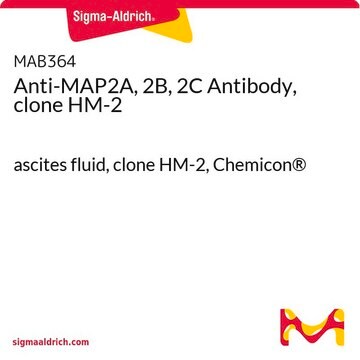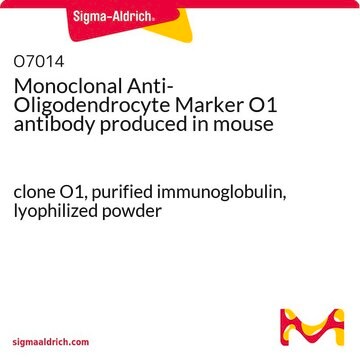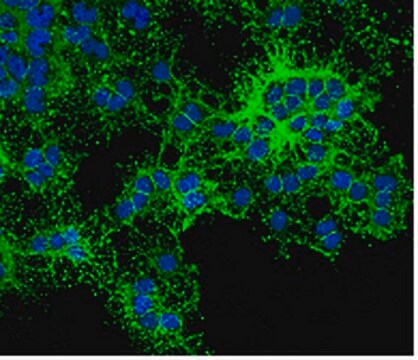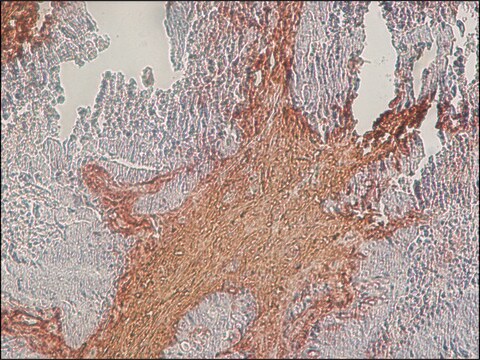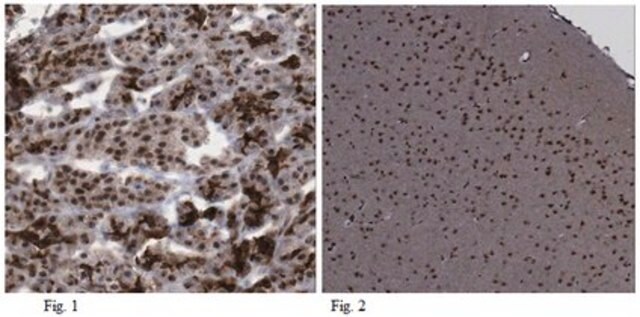MAB344
Anti-O1 Antibody, clone 59
clone 59, Chemicon®, from mouse
About This Item
Polecane produkty
pochodzenie biologiczne
mouse
Poziom jakości
forma przeciwciała
saturated ammonium sulfate (SAS) precipitated
klon
59, monoclonal
reaktywność gatunkowa
chicken, rat, mouse, human
producent / nazwa handlowa
Chemicon®
metody
immunohistochemistry: suitable
izotyp
IgM
Warunki transportu
wet ice
docelowa modyfikacja potranslacyjna
unmodified
Specyficzność
Immunogen
Zastosowanie
Note: 01 is a lipid which is released from the membrane by alcohol.
Optimal working dilutions must be determined by the end user.
Neuroscience
Neuronal & Glial Markers
Postać fizyczna
Przechowywanie i stabilność
Komentarz do analizy
Oligodendrocyte culture, Brain
Inne uwagi
Informacje prawne
Oświadczenie o zrzeczeniu się odpowiedzialności
Kod klasy składowania
10 - Combustible liquids
Klasa zagrożenia wodnego (WGK)
WGK 2
Temperatura zapłonu (°F)
Not applicable
Temperatura zapłonu (°C)
Not applicable
Certyfikaty analizy (CoA)
Poszukaj Certyfikaty analizy (CoA), wpisując numer partii/serii produktów. Numery serii i partii można znaleźć na etykiecie produktu po słowach „seria” lub „partia”.
Masz już ten produkt?
Dokumenty związane z niedawno zakupionymi produktami zostały zamieszczone w Bibliotece dokumentów.
Produkty
Human iPSC neural differentiation media and protocols used to generate neural stem cells, neurons and glial cell types.
Podłoża do różnicowania neuronalnego ludzkich iPSC i protokoły stosowane do generowania neuronalnych komórek macierzystych, neuronów i komórek glejowych.
Protokoły
Step-by-step culture protocols for neural stem cell culture including NSC isolation, expansion, differentiation and characterization.
Nasz zespół naukowców ma doświadczenie we wszystkich obszarach badań, w tym w naukach przyrodniczych, materiałoznawstwie, syntezie chemicznej, chromatografii, analityce i wielu innych dziedzinach.
Skontaktuj się z zespołem ds. pomocy technicznej